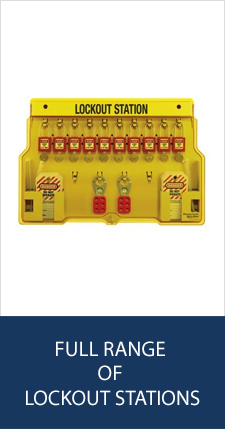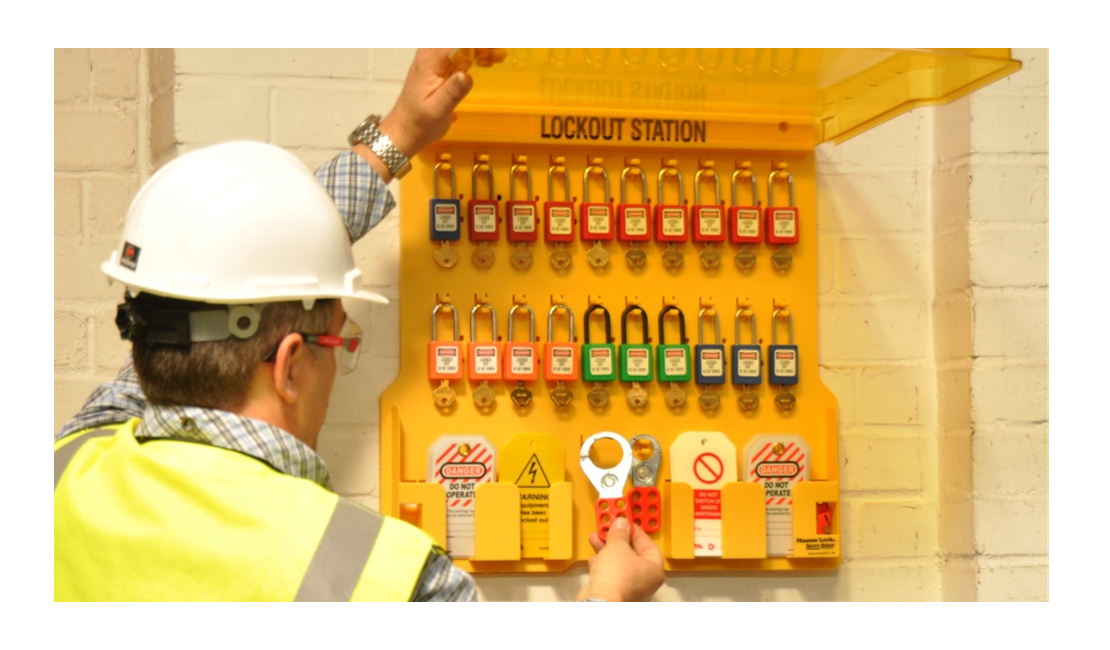What is Lockout/Tagout Security System
What is Lockout/Tagout?
Lockout/Tagout is a planned safety procedure that disables the energy supply of industrial machinery and equipment whilst servicing, maintenance work or repairs are in progress.
The aim of this system is to effectively protect workers from the dangers created by live machinery or electricity, therefore lowering the overall level of risk when working with this equipment.
How To Choose A Safety Padlock The purchase and use of high quality safety padlocks in combination with lockout devices forms an integral part of any industrial safety programme.
When an authorised employee turns a piece of industrial machinery off, whether for maintenance, repair or any other reason, a lockout device and safety padlock should be applied to ensure that no other person is able to re-energize the machine.
Having such safety procedures in place protects both employees and their employers, preventing accidents in the workplace and helping employers to comply with international and local safety legislation. Lockout Tagout Procedure Lockout Tagout is a planned safety procedure that disables the energy supply of industrial machinery and equipment whilst servicing, maintenance work or repairs are in progress.
The aim of this system is to effectively protect workers from the dangers created by live machinery or electricity, therefore lowering the overall level of risk when working with this equipment.
The standard procedure for implementing Lockout Tagout is laid out below.
All steps should be carried out either by a single authorised employee or the employer, and company regulations must be followed at all times when implementing the Lockout Tagout procedure.
Step 1: Preparation Prepare for a shut down of energy source. Identify the type of energy used (e.g. electrical) and the potential risks, considering the type and magnitude of the energy and how it can be controlled.
Step 2: Notification Locate the isolator(s) and prepare to ‘lock off’ energy source. Inform any operators and supervisors who may be affected by isolating the machinery and make them aware of the work being carried out. Ensure all affected staff understand the lockout procedure.
Step 3: Shut-down Turn off the equipment or machine, following established procedures and ensuring that there are no increased hazards from equipment stoppage. Isolate equipment from energy sources, by disconnecting switches, circuit breakers, valves etc. Any stored energy in the equipment should be released, for example by bleeding off pressure, allowing equipment to cool, discharging capacitors, draining lines, or any other methods specified in lockout procedures for individual machines.
Step 4: Lock Off Lock off all energy sources in the safe/off position, at each isolating device, using the proper Lockout Devices. Apply a lock so no one can turn the switch or valve whilst the work is in progress. Warn against accidental use by attaching lockout warning tags. If several employees are working on the same equipment, make sure each puts in place their own identification label and own safety padlock.
Step 5: Test Check all of the machine controls and electrical circuits to ensure energy is completely isolated. (Release stored energy, verify machine in ‘zero energy state’- operate controls to verify isolated before returning to ‘off’ position. Could include reading pressure/temperature gauges, using test equipment)
Step 6: Repair or rework Perform maintenance/servicing/repairs.
Step 7: Return to service When the work is completed take off the lockout/tagout devices and proceed to test, ensuring that all tools and mechanical and electrical lockout devices have been removed. Lockout devices must be only be removed by the person who applied them- if several employees are working on the same piece of equipment, the team supervisor must remove their lockout device last. Warn all workers before re-energising, check the work area to ensure all employees are at a safe distance from the equipment, and restore the energy supply to the machine.




Comments
Leave your comment